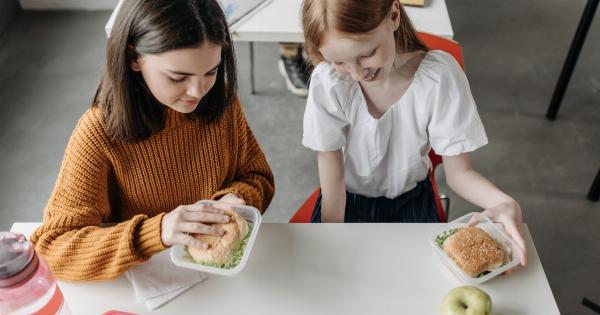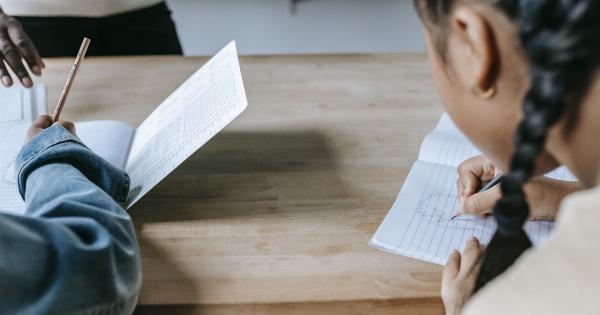As students, it is natural for us to feel the pressure of performance and expectations.
With academic achievement being one of the primary measures of success in school, it is understandable that students who struggle may feel disheartened and discouraged. However, one simple way in which schools can support these students is by giving them a chance to take a break during lunchtime.
Why a lunch break matters
While lunch breaks may seem like a small thing, they can make a significant difference in the lives of students who struggle academically. Here are a few reasons why it is essential to give these students a break:.
1. Time to recharge
Students who struggle in school may find it challenging to focus and stay engaged in class. This can be mentally and emotionally draining, and a break during lunchtime can provide them with the opportunity to recharge.
By having some time to themselves, away from the pressures of the classroom, these students can come back feeling refreshed and ready to tackle the rest of the day.
2. Room for socialization
For many students, lunch is one of the only times during a school day when they can socialize with their peers. For students who struggle academically, this can be particularly important.
Not only does it give them a chance to build relationships, but it can also help them feel more connected to their school community.
3. Reduced stress
Academic pressure can be stressful, and for students who struggle, this stress can be especially overwhelming.
A lunch break can help to reduce this stress by giving them a chance to step away from the work and focus on something else for a little while. This can help them feel more relaxed and less anxious, making it easier for them to perform academically.
How schools can make it happen
While the benefits of a lunch break may be clear, many schools may wonder how they can implement this in a practical sense. Here are a few ideas:.
1. Create a separate space
One way to give struggling students a break during lunch is by creating a separate space for them to go to. This could be a quiet room where they can read or relax, or it could be a space designated for extra help with academic work.
2. Provide extra support
In addition to a separate space, schools can also provide additional support during lunchtime.
This could be in the form of a tutor or mentor who can work one-on-one with struggling students, or it could be a teacher who is available for help with specific subjects.
3. Encourage socialization
While the focus may be on academic support, socialization is also important for struggling students.
Encouraging them to interact with their peers during lunchtime can help them feel more connected to their school community and can also help to reduce the stress and pressure they feel.
Conclusion
Overall, giving struggling students a chance to take a break during lunchtime can make a significant difference in their academic and emotional wellbeing.
By providing them with the space and support they need, schools can help these students feel more confident and connected, which can ultimately lead to improved academic performance.



























